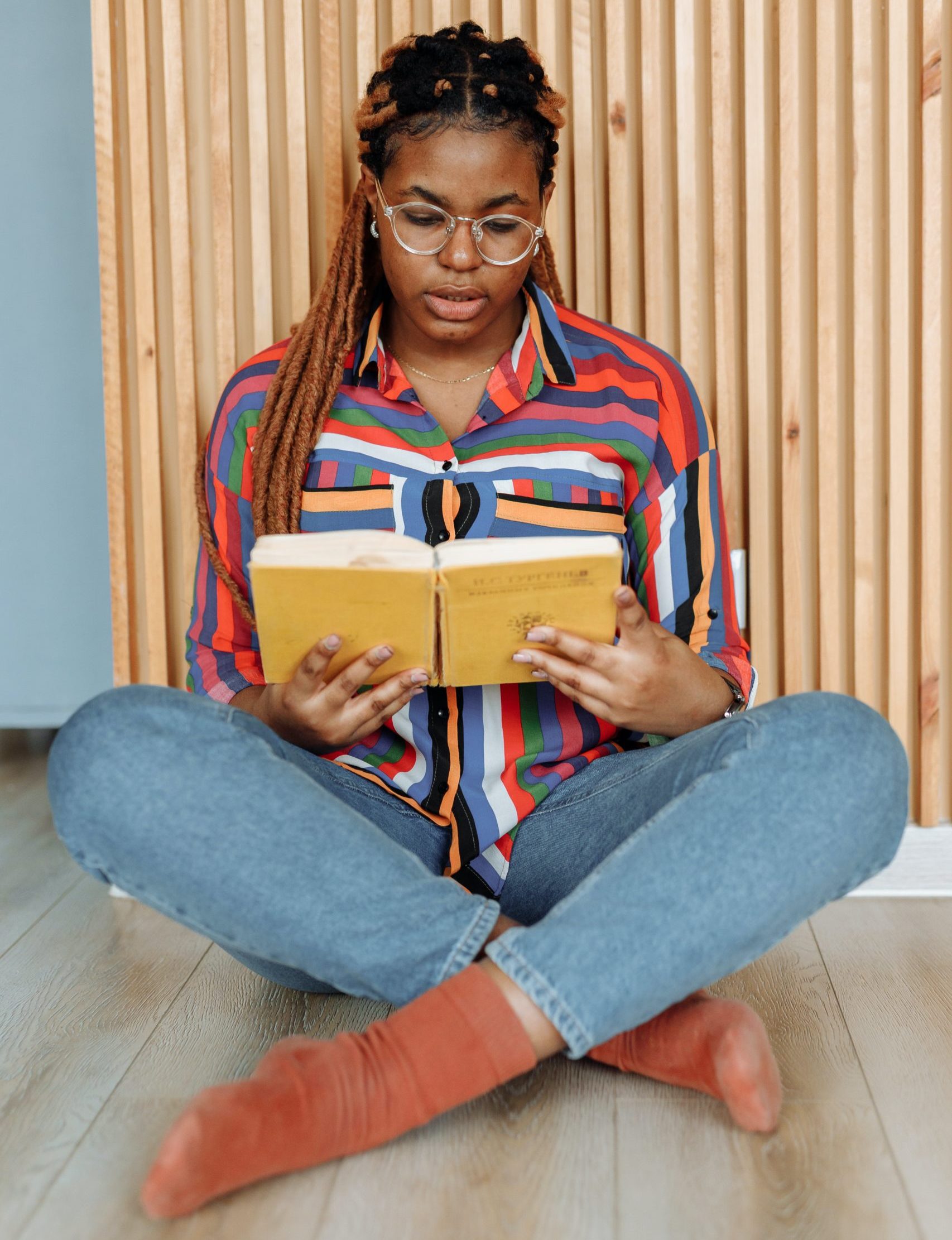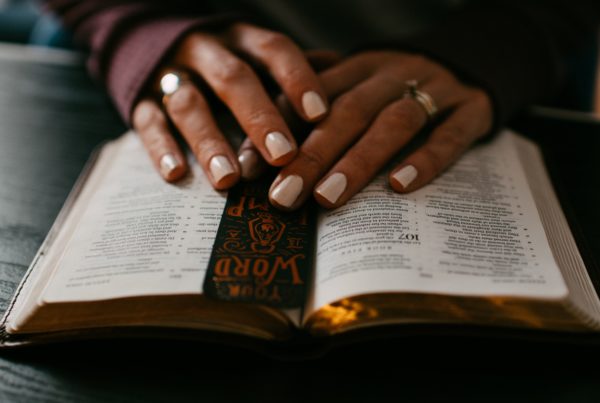It’s a dark winter’s eve. They have traveled far and long, glimpsing wistfully, as they’ve trudged along, into the lighted front rooms of many homes, observing scenes of comfort and familial love. A longing has been stirred in them. Finally, Rat and Mole arrive:
Mole’s face beamed at the sight of all these objects so dear to him, and he hurried Rat through the door, lit a lamp in the hall, and took one glance round his old home. He saw the dust lying thick on everything, saw the cheerless, deserted look of the long-neglected house, and its narrow, meagre dimensions, its worn and shabby contents – collapsed again on a hall-chair, his nose to his paws. “O Ratty!” he created dismally, “why ever did I do it? Why did I bring you to this poor, cold little place, on a night like this, when you might have been at River Bank by this time, toasting your toes before a blazing fire, with all your own nice things about you!”
The Rat paid no heed to his doleful self-reproaches. He was running here and there, opening doors, inspecting rooms and cupboards, and lighting lamps and candles and sticking them up everywhere. “What a capital little house this is!” he called out cheerily. “So compact! So well planned! Everything here and everything in its place! We’ll make a jolly night of it. The first thing we want is a good fire; I’ll see to that – I always know where to find things. So this is the parlour? Splendid! Your own idea, those little sleeping-bunks in the wall? Capital! Now, I’ll fetch the wood and the coals, and you get a duster, Mole – you’ll find one in the drawer of the kitchen table – and try and smarten things up a bit. Bustle about, old chap!”
Encouraged by his inspiriting companion, the Mole roused himself and dusted and polished with energy and heartiness, while Rat, running to and fro with armfuls of fuel, soon had a cheerful blaze roaring up the chimney.
This excerpt from Kenneth Grahame’s 1908 The Wind in the Willows draws attention to the rousing potential of inspirited companions.
When is the last time I, like Mole, feeling doleful, felt newly energized by a companion? Can you recall a recent moment in which you felt your courage renewed? Heard a word that restored a spirit of heartiness to your next steps?
Even more, have you recently found a companion in literature—a character or author—that awakened you to seeing life differently?
I had that experience a few weeks ago while reading Annie Dillard’s The Maytrees. She roused my thinking about what love is and how it can be lived out over the decades of one’s life.
Now imagine an education filled with books and experiences that brings just that, an enlivening, an awakening to the world around, an education that rouses a child and the teacher to fullness of life.
This type of education has been imagined. It has been practiced, in many places perhaps, but certainly in England in the early twentieth century, and it is currently quietly sweeping the globe and garnering attention of thoughtful educators across the world.
It is the relational education imagined, designed, and initially delivered by British educationalist, Charlotte Mason.
“Education is the Science of Relations”; Charlotte Mason wrote early in the twentieth century, “that is, that a child has natural relations with a vast number of things and thoughts.”
She posited that we parents and educators are to create the environment in which such relationships can be formed so the child can be awakened to delight, find inspiriting companions, and be roused to life in all its fullness.
Mason claimed that a relational education begins by recognizing that children, as persons, are born into and meant for relationship.
She summarizes or categorizes her claim into four key types of relationships: children relate with themselves, with others, with the world around them, and with God.
- First, a relational education nurtures self-knowledge and respects the personhood and uniqueness of every child and as such values the inherent dignity of each student, parent, and educator as they work alongside one another.
- Second, it aims to create connection and relationship with other people across time and place, those who lived in the past, who live today, and who will live in the future.
- Third, it builds a child’s relationship with the universe, with creation, with nature, beginning, for example, with tracking, locating, identifying all that lives and grows within a short distance, say a kilometre, of where a child lives–the child builds relationships with the plants, insects, animals, fish, birds, trees, and landforms close to themselves, and continues to investigate more broadly and deeply as they grow–keeping a nature notebook, recording labs, and so on.
- And finally, a relational education opens the way for relationship with God–acquaintance with the biblical narrative is prioritized, transcendence and mystery are respected, and the entire approach makes space for the Holy Spirit to engage with the child as learner and recognizes that He is ultimately the author of all truth.
So if this makes sense, that the hallmark ideas of education are about recognizing the personhood of the child and about building relationship, what does it look like, what methods flow from these principles? What kind of curriculum and lessons respect children as persons and cultivates many-layered, inspiriting relationships?
First, A relational curriculum is full of both “books and things.”
Encounters with the written word and the physical world together create a balanced and living curriculum that is expansive enough to stretch and delight students who might naturally gravitate toward one or the other but deserve both. Mason believed that children should be given the very best books, but also given the opportunity to explore the world around them and to engage with real, tangible objects and experiences. In a world where children are increasingly spending their time in front of screens, this emphasis on direct experience is perhaps more important than ever.
Second, a relational curriculum seeks to introduce students to a wide variety of subjects and ideas.
This approach honors the inseparable coherence of the intellectual and spiritual life, and so seeks to introduce students to vitalizing ideas and beauty in art, music, poetry, history, geography, physical education, handicrafts, literature, math, science, languages, and other areas. “We owe it to [children] to initiate an immense number of interests,” Mason wrote.
Third, A relational curriculum also seeks to expose students to a breadth of perspectives.
Mason recognized that one of the most important responsibilities that rests upon the child as a person is “the acceptance or rejection of ideas”. Students are not viewed as receptacles to fill up but as persons who must grow in wisdom and knowledge. Mason (as a British citizen) warned, “The study of English history alone is apt to lead to a certain insular and arrogant habit of mind.”
A relational curriculum offers the best of many different ideas and perspectives so that children can grow in liberty (not license), grow in freedom to make healthy decisions, and offer impactful contributions through their lives. As they consider many points of view, children learn to understand their place in the universe and to value others as image bearers of God like themselves. They learn the “art of living” from many authors as they develop “an intimacy with literature as extensive and profound as we can secure”. They develop a love of learning, attitude of wonder, and spirit of humility.
Fourth, a relational education works with the grain of a child’s nature.
Because relationship is at the center of personhood and education, each subject within the curriculum is taught in a way that seeks to work with the grain of a child’s physical and spiritual nature.
- Lessons are short (often from 20 minutes for younger students to a maximum of 45 for high school as students mature). Lessons vary from one to the next to allow children to give their best attention and interest to each lesson.
- The books used are what Mason calls “living books,” books written by experts passionate about their subjects with well-chosen language, inspiring ideas, and many times in a narrative form. Mason claimed that a child’s “attention responds naturally to what is conveyed in literary form,” and both theologians and scientists are increasingly agreeing with her claim.
- The curriculum is tailored to the child’s geographical and cultural context. They learn about their own local history before learning the history of other countries and cultures.
- Throughout the curriculum and across the grades, a relational lesson includes some form of narration–first oral and then increasingly more varieties as students mature. This practice of narration is based on the foundational understanding of children as persons who have active minds that must interact with the feast in front of them and digest ideas presented in order to really know and begin to integrate what they have heard or read. This focus on oracy is now increasingly recognized by experts as part of a vitalizing education.
One can conclude that a relational education is balanced between “book knowledge” and hands-on encounters and experience with the world. It is broad and varied, introducing children to the many different interesting areas of knowledge and diverse perspectives–Mason often uses the language of “feasting.” It relies on methods that honor each child as an image bearer of God. And it aims, in all these things, to guide children into a deep understanding of themselves, a care for others and the world around them, and, most importantly, a love for Creator and the transcendent, for the One in whom all things hold together.
This is just the beginning of the foundations and practical implications of a relational education. It can powerfully transform the way we understand the role of teachers, the nature of students, assessment, curriculum, and so much more in teaching and learning. And the idea of relationship is central to the whole approach. Children, as persons, are born into and meant for relationship.
It’s a treat as 2023 closes to reflect on the personal and professional rousing and enlivening that we can experience though our own companions and relationships.
Charlotte Mason, born in 1842, died 100 years ago in 1923. After almost two decades in elementary, secondary, and post-secondary education, her pivotal lecture series in the winter of 1885/86 set the trajectory for the next four decades of her life. She eventually wrote 6 books on education, established a curriculum updated annually, founded a vast network of parents organized in local communities, established an education journal that published monthly for 99 years, and founded a college of education that continues to exist in Ambleside, UK today. She was deeply religious, held an expansive view of the work of the Holy Spirit within a child’s education, and promoted the radical (for her day) concept of the child as a person. A remarkable woman and educational philosopher for her time and for ours.
Of all her contributions, it is the relational aspect of education that stands out for me. Her famous quote gets at this:
The question is not,—how much does the youth know? when he has finished his education—but how much does he care? and about how many orders of things does he care? In fact, how large is the room in which he finds his feet set? and, therefore, how full is the life he has before him?
Education is not only about knowing and having read broadly and being able to think critically, it is about the stimulation of relationship, of love, of care.
I also turn the question back to ourselves. As we think about the education we are designing and offering, do we see hints of the relational education Charlotte Mason would have envisioned?
Do we see children being roused by inspiriting companions—companions met in literature, companions met in their teachers, in their peers, and in others like you. Companions who will walk with them in life, companions whose stories live in their minds, serving to give courage, reminding of what it is to be human in inhumane circumstances, companions who remind through their stories that illustrate the power of our similarities rather than the division of our differences, companions—artists, composers, poets, gardeners, architects—who will remind of what beauty is, companions who will ennoble living the fullness of life our Saviour came to give us two thousand years ago.
Acknowledgement: The author wishes to thank the Charlotte Mason Institute for permissions granted to draw on its helpful descriptions of relational education.
Editor’s Note: This post was originally published in Edvance Notice. It is re-posted here, with permission.



